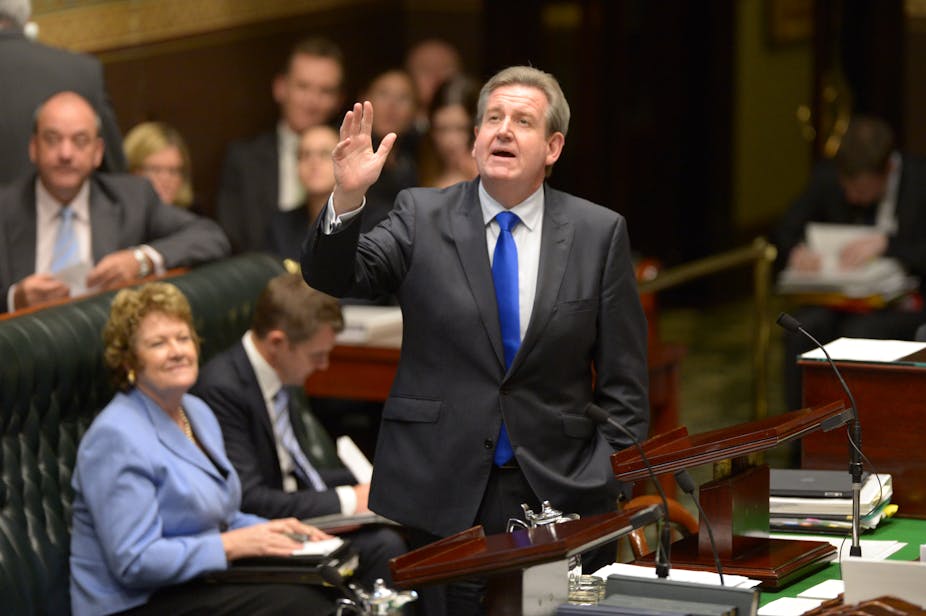The O'Farrell government’s new Transport Master Plan may be grounded in realism, but it is an election loser.
The plan, which has been brewing since the change of government, puts the construction of new motorways front and centre, but kicks a range of other potential transport infrastructure, such as a rail duplication for the Harbour Bridge and light rail beyond the CBD, into the long grass.
The funding of the near-term projects it does endorse focuses comparatively budget-neutral ideas that may be hard to realise (being more efficient with existing expenditures and procurement practices) and politically unpalatable (tolls and cost increases).
There’s trouble brewing. Recent polling shows that the government has only lost a few percentage points in overall terms. This, however reflects the lack of perceived alternative in the electorate, as support for the premier has taken a more substantial slide. Government is about choosing, and the lack of policy detail seen in the last state election meant that the coalition was always going to face difficulties in shifting the public from rejecting the outgoing morally-bankrupt government to embracing a new austere administration.
While the small target opposition strategy we saw in the 2011 election was clearly an effective way of letting the ALP tear itself to pieces, relying on a general hatred of Labor to win the next election is a risky proposition.
Certainly the low profile of ALP leader John Robertson demonstrates the opposition has a long way to go in rebuilding its credibility with the electorate, but issues such as education cuts – where the government will see itself compared, not with state Labor but with the commonwealth’s education credentials – will hurt the coalition in NSW.
Like it or not, the 2011 NSW election was fought on transport infrastructure and the capacity of the two major parties to deliver it. Labor’s track record in government may have been more impressive than critics give it credit, but fiascos like the proposed Metro, and a history of transport plans that were under-realised left the electorate jaded and cynical.
Into this breach the coalition talked about infrastructure issues. Partially this was due to the perceived weaknesses of the ALP, but also in response to agenda setting by the two major papers. This is illustrated in the figure below, that shows the prominence of key themes in electoral coverage, as sourced from a content analysis of election coverage in the state’s two major newspapers.

This will be the context upon which the public evaluates the government in 2015. To make good on the perceived promises, big money will be needed, and soon. This, however, runs counter to the government’s other political narrative: that borrowing is bad.
One of the major arguments against the use of borrowing to fund projects is the impact on the state’s credit rating. The credit rating has become a convenient way that governments’ demonstrate their fiscal management skills, but often the implications and justification of this prised target are not well articulated to the community. The credit rating’s major impact (aside from the political) is on the cost of borrowings. If states avoid borrowing to maintain a good rating, there’s little benefit from having the much vaunted AAA.
For many politicians this objective is framed as an analogy with simple home economics. State borrowing is commonly criticised as “whacking it on the public credit card”. Like any cliché, this one needs a bit of a reality check periodically to ensure its underlying meaning hasn’t drifted.

Australian credit card users have, on average, about $5,000 worth of debt per card holder. They know it costs them over 1/6th of their borrowing per annum in charges and they don’t like it. But for a variety of reasons they are stuck with it.
It’s therefore bad tactically to imply that only idiots revert to the card. Australians – for good or ill – understand debt. The home economics of the contemporary Australian voter is that you use debt to obtain assets that have immediate value: things like houses, cars and the like. While some credit card debt is clearly wasteful consumerism, the comparison between the construction of, say a new light rail network and the DVD boxed set of Desperate Housewives is a weak one.
While the next election is still three years away, infrastructure is a slow and cumbersome beast to plan and develop. All the “shovel ready” projects such as the Dulwich Hill light rail line were the low-hanging fruit plucked by the ALP towards the end of its reign. All that’s left for Barry O'Farrell are hard choices.

